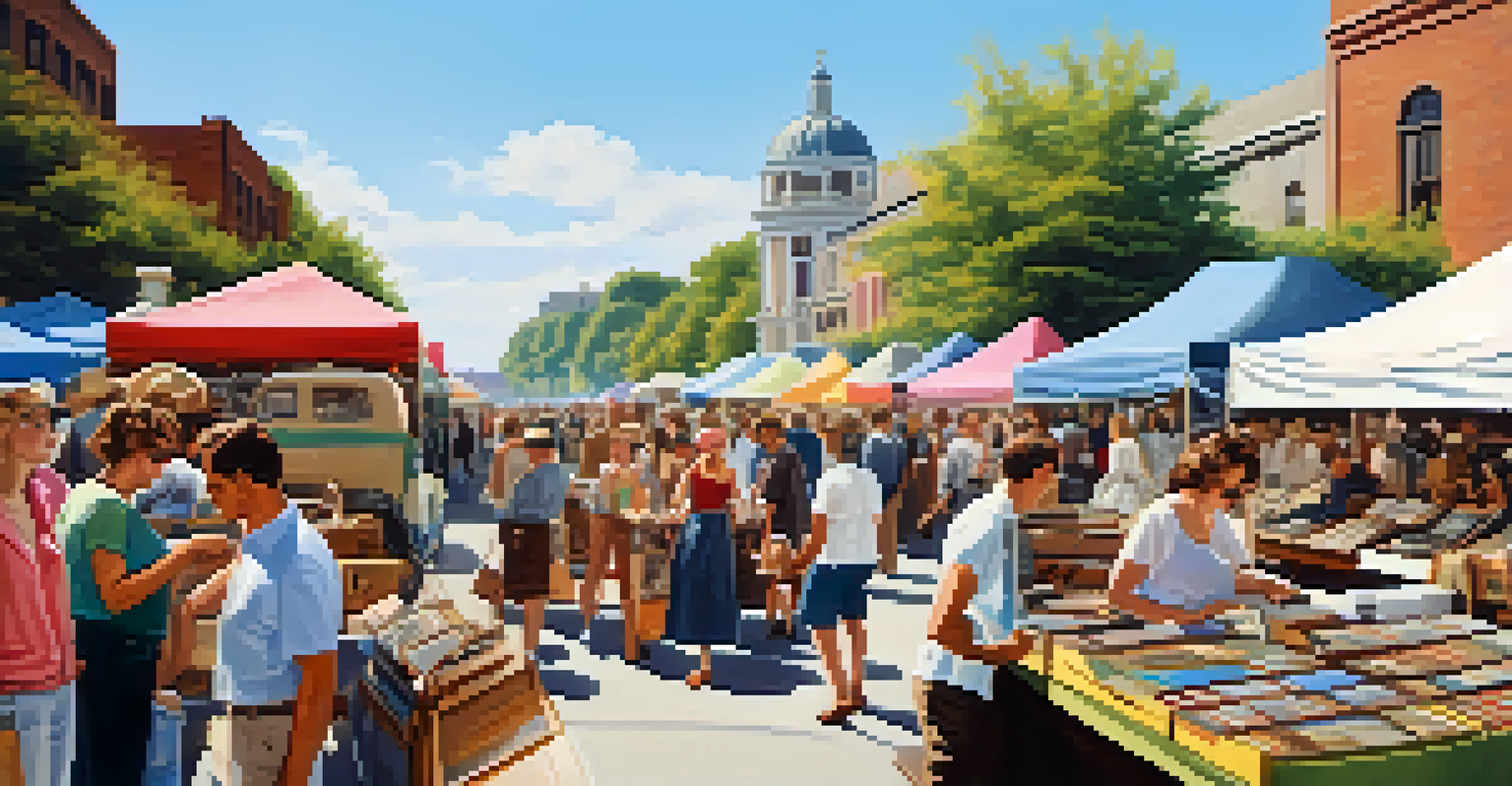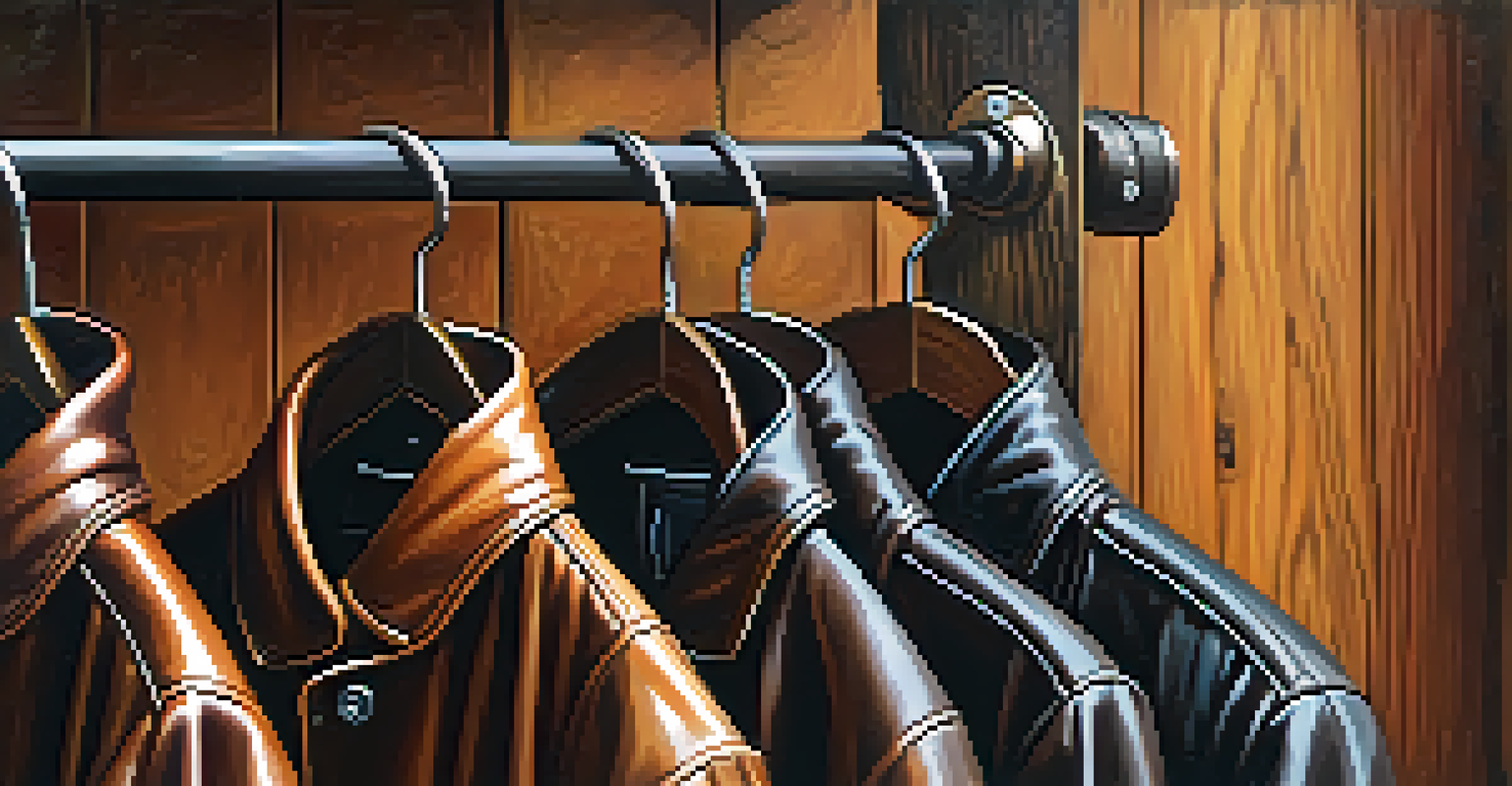Why Vintage Clothing is Captivating the Contemporary Consumer

The Allure of Unique Styles in Vintage Fashion
Vintage clothing offers a unique charm that modern fashion often lacks. Each piece carries a story, reflecting the era it comes from and making it a conversation starter. This individuality allows consumers to express their personal style in ways that fast fashion simply cannot match.
Fashion is about dreaming and making other people dream.
Additionally, vintage pieces often feature intricate details and craftsmanship that are rarely found in contemporary garments. For instance, the delicate embroidery on a 1970s dress can showcase a level of artistry that mass-produced items often overlook. This attention to detail can evoke nostalgia and admiration from both the wearer and those around them.
As consumers increasingly seek ways to stand out, vintage clothing provides an ideal solution. With each find being one-of-a-kind, wearing vintage becomes a statement of authenticity, allowing individuals to showcase their unique tastes without blending in with the crowd.
Sustainability: A Driving Factor for Vintage Appeal
In today's world, sustainability is more than just a buzzword; it's a movement embraced by many consumers. Vintage clothing aligns perfectly with this ethos, as it promotes the concept of reusing and recycling fashion. By choosing vintage, consumers contribute to a circular economy, reducing waste associated with fast fashion.

Moreover, the environmental impact of producing new clothing is significant, often involving harmful chemicals and excessive water usage. Vintage shopping allows individuals to enjoy fashion without contributing to these detrimental effects. This mindful consumption resonates deeply with eco-conscious shoppers, making vintage a compelling choice.
Vintage Fashion's Unique Charm
Vintage clothing offers individuality and craftsmanship that fast fashion often lacks.
As awareness of environmental issues grows, consumers are more inclined to support brands and practices that prioritize sustainability. Vintage clothing not only satisfies the desire for stylish attire but also serves as a responsible fashion choice, appealing to the modern consumer's values.
Nostalgia: How the Past Influences Present Trends
Nostalgia plays a pivotal role in the resurgence of vintage fashion. Many consumers are drawn to styles reminiscent of their childhood or earlier decades, creating a sense of comfort and familiarity. This emotional connection to the past can be incredibly powerful, influencing purchasing decisions.
Vintage clothing is not just about the fabric; it’s about the stories that come with it.
For example, the popularity of 90s fashion has seen a revival in recent years, with high-waisted jeans and oversized jackets making a comeback. Fashion influencers and celebrities often sport these vintage styles, further fueling the trend and making it appealing to a younger audience who may not have experienced them the first time around.
By tapping into nostalgia, vintage clothing becomes more than just an aesthetic choice; it becomes a way for consumers to reconnect with cherished memories. This emotional aspect enhances the allure of vintage pieces, creating a powerful draw for contemporary shoppers.
The Thrill of the Hunt: Vintage Shopping Experiences
One of the most exciting aspects of vintage shopping is the thrill of the hunt. Unlike purchasing from mainstream retailers, searching for vintage pieces often involves exploring thrift stores, flea markets, and online platforms. This adventure can be incredibly rewarding, as each visit offers the potential for a unique find.
Many vintage enthusiasts relish the unpredictability that comes with each shopping excursion. You never know what treasures you might uncover—a rare designer piece or a quirky accessory that perfectly complements your outfit. This element of surprise adds to the overall experience, making it more enjoyable than simply browsing a standard retail store.
Sustainability Drives Vintage Appeal
Choosing vintage clothing supports sustainability by promoting reuse and reducing waste.
Additionally, sharing these hunting experiences with friends or fellow vintage lovers can create a sense of community. Whether swapping stories about recent finds or trading tips on the best shops, vintage shopping fosters connections among like-minded individuals who appreciate the beauty of timeless fashion.
Cultural Identity and Vintage Fashion Choices
Vintage clothing often allows individuals to express their cultural identity in a meaningful way. Different eras and styles can reflect specific cultural movements, enabling wearers to celebrate their heritage. For instance, wearing a traditional garment can evoke pride and connection to one's roots.
Moreover, vintage fashion can serve as a bridge between generations. Younger consumers may adopt styles from their parents or grandparents, creating a sense of continuity and respect for the past. This blending of old and new not only enriches personal style but also fosters intergenerational connections.
As the world becomes increasingly globalized, vintage clothing offers a way to embrace and honor diverse cultural expressions. By selecting pieces that resonate with their identity, consumers can create a unique wardrobe that tells their story while appreciating the rich tapestry of fashion history.
Quality Over Quantity: The Vintage Advantage
In an age of fast fashion, many consumers are beginning to prioritize quality over quantity. Vintage clothing often showcases superior craftsmanship, as items were made to last rather than be disposable. This commitment to quality resonates with those who recognize the value of investing in timeless pieces.
For example, a vintage leather jacket may develop a beautiful patina over the years, enhancing its character and appeal. In contrast, many new garments may wear out quickly, leading to frequent replacements. Vintage fashion encourages a more thoughtful approach to consumption, promoting the idea that fewer, high-quality pieces are preferable to a closet full of fast fashion items.
Nostalgia Fuels Vintage Trends
Many consumers are drawn to vintage fashion due to emotional connections to past styles.
Ultimately, by choosing vintage, consumers are not just acquiring clothing; they are investing in enduring styles that stand the test of time. This mindset shift is increasingly attractive to contemporary shoppers who appreciate the longevity and uniqueness of vintage finds.
The Role of Social Media in Vintage Fashion Trends
Social media has played a significant role in the rise of vintage fashion, making it more accessible and appealing to a broader audience. Platforms like Instagram and TikTok showcase influencers and everyday users flaunting their vintage finds, inspiring others to explore this fashion avenue. This visual medium allows for easy sharing of styles and ideas, creating a vibrant community around vintage clothing.
Moreover, social media has facilitated the growth of online vintage shops and marketplaces. Consumers can now browse an extensive range of vintage options from the comfort of their homes, making it easier than ever to find unique pieces. This convenience, combined with the allure of vintage, has contributed to its growing popularity.

As trends evolve, social media will likely continue to shape the future of vintage fashion. With influencers setting the stage and consumers eager to participate, the vintage movement shows no signs of slowing down, ensuring it remains a captivating choice for fashion enthusiasts everywhere.